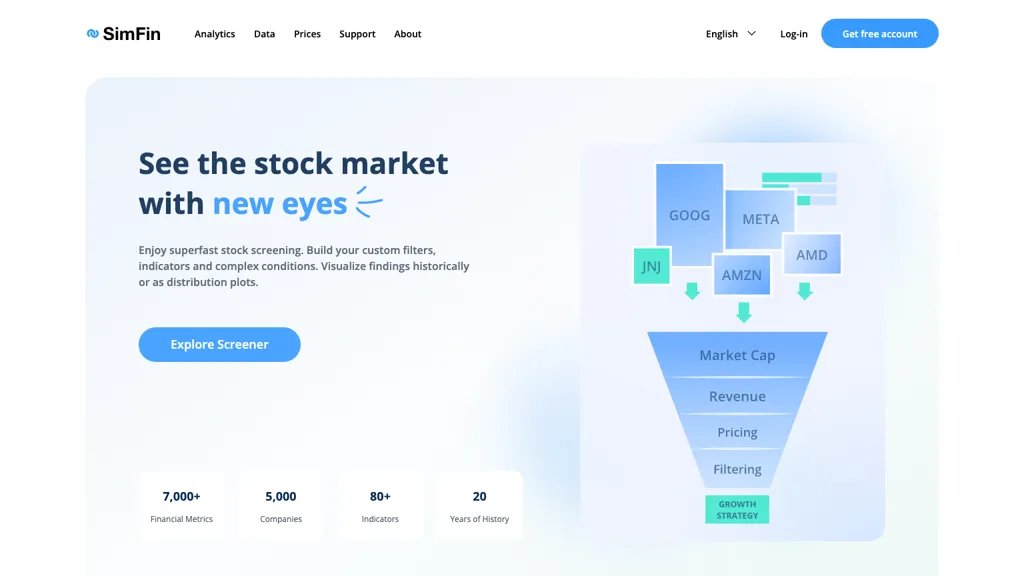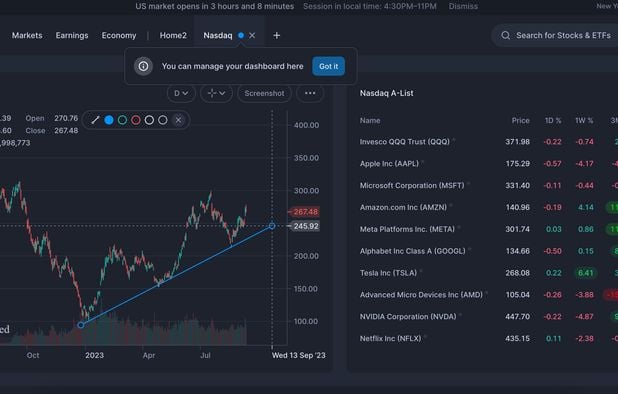20 Good Info To Picking AI Stock Picker Platform Sites
20 Good Info To Picking AI Stock Picker Platform Sites
Blog Article
Top 10 Suggestions For Evaluating The Integration Of Ai Stock Predicting Trading Platforms
Integration and compatibility are critical elements when it comes to evaluating AI stock predicting/analyzing trading platforms. Integrating your platform with the existing tools, systems, and workflows is a excellent way to improve efficiency. Here are the top 10 ways to evaluate the compatibility and integration between these platforms.
1. Check Brokerage Integration
Platform integration with preferred brokers or trading accounts: Ensure whether the platform integrates with the broker you choose or account.
Trade execution: Check whether the platform allows direct trade execution through the integrated broker.
Account synchronization: Find out if the platform can sync account balances, positions, and the history of transactions in real-time.
2. Evaluate the availability of APIs
API access: Ensure that the platform has an API (Application Programming Interface), which allows developers to develop custom tools and automate workflows.
API documentation: Make sure the API is properly documented, by providing examples and usage-cases.
Rate limits: Determine whether there are acceptable rates for the API and if it is able to accommodate the anticipated volume of usage.
3. Assess Third-Party Integration
Popular tools: Make sure that the platform is compatible with tools like Excel or Google Sheets.
Export and import of data: Make sure your platform supports easy export/import of data to and from other tools.
Extensions and plugins: Make sure that your platform supports extensions or plugins. They can add additional functionality.
4. Test Compatibility With Operating Systems
Desktop compatibility: Make sure the platform works on the operating system you prefer (Windows, macOS, Linux).
Mobile compatibility: Determine if there is an application that is mobile compatible that works with iOS or Android.
Web-based accessibility: To increase flexibility, make sure that the platform's interface is accessible through an internet browser.
5. Assessment of the Data Integration Capabilities
Data sources - Ensure that the platform can be linked to various sources of information (e.g. news feeds or market data, and sentiments on social media).
Real-time data streams: Confirm that the platform can integrate live data streams to provide the most up-to-date analysis.
Historical data import - Verify whether your platform allows you to add historical data to your backtesting or analysis software.
6. Assessment of Cloud and On-Premise compatibility
Cloud-based platform that is accessible anywhere with an internet connection.
On-premises deployment: Make sure you know your platform supports deployment on premises.
Hybrid solutions: See whether the platform has the option of a hybrid model, which combines cloud capabilities and on-premise ones.
7. Make sure that you have Cross-Platform Synchronization enabled.
Device synchronization: Ensure that the platform syncs settings and data across all devices (desktops mobiles, tablets, desktops).
Real-time updates: See if your changes made to one device immediately show up on the other devices.
Access from offline: Find out whether the platform permits limited functionality or data access when offline.
8. Verify the compatibility of trading strategies
Algorithmic trading: Make sure that the platform you select supports automated or algorithms trading strategies.
Custom indicators - Check to see if the platform permits the use or customized scripts and technical indicators.
Strategy backtesting: Determine if the platform can be used for testing trading strategies back using historical information.
9. Review Security and Compliance
Data encryption: Ensure that your platform is using encryption for all data in transit as well as when it's in storage.
Authentication Check to see if your platform has a secure authentication method (e.g. 2-factor authentication).
Regulation compliance: Determine if the platform is compliant with applicable laws (e.g. GDPR, FINRA, SEC).
10. Test Scalability and Performance
Scalability - Make sure that the platform you choose can accommodate your increasing requirements in terms of data and data.
Performance under load: Find out whether your platform is able to adapt to high volatility market conditions.
Utilization of resources: Ensure that your system makes use of the system's resources, such as memory, CPU and bandwidth.
Bonus Tips:
User feedback: Make use of testimonials from users to assess the platform integration capabilities.
Trial period: Try an unpaid trial or demo to test the integration of the platform with your current workflows and tools.
Customer support: Ensure that the platform offers a robust support in case of integration problems.
If you follow these guidelines, you can effectively assess the compatibility and integration of AI stock-predicting and analyzing platforms in order to ensure they are compatible with your existing systems and enhance the efficiency of your trading. Follow the recommended link about ai trading tools for blog tips including ai chart analysis, ai stocks, trading ai, best ai for trading, ai investment app, ai for investment, ai for investing, stock ai, ai investment platform, market ai and more.
Top 10 Tips For Assessing The Transparency Of Ai Stock Analysing Trading Platforms
Transparency is an important element when it comes to evaluating AI-driven stocks prediction and trading platforms. Transparency ensures users can be confident in the operation of the platform, comprehend the decisions made, and validate the accuracy of predictions. Here are 10 suggestions on how to evaluate the transparency of platforms.
1. The AI Models are explained in clear terms
Tip: Verify that the platform explains clearly the AI algorithms and models that are used for prediction.
Knowing the technology behind it allows users to assess its credibility.
2. Disclosure of data sources
Tips: Ensure that the platform discloses the sources of data it uses.
Why: Knowing data sources can help ensure that the platform is using precise and complete data.
3. Performance Metrics And Backtesting Results
Tips: Make sure you seek out transparent reports on performance metrics such as accuracy rates and ROI, as well as backtesting results.
The reason: It allows users to verify the effectiveness of the platform and its historical performance.
4. Actual-Time Updates and Notifications
Tips. Check whether the platform provides real-time notifications or updates on system changes and trades in addition to predictions.
What is the reason? Real-time visibility assures that users are always aware of critical actions.
5. Open Communication about Limitations
Tips: Make sure your platform provides information about the limitations and risks of the strategies used to trade and the forecasts it makes.
What's the reason? Recognizing the limitations of a product can build trust, which helps customers make better informed choices.
6. Users can get access to raw data
Tips: Ensure that users have access to raw data used in AI models, or the intermediate results.
How do they do it? Users are able to do their own analysis and validate predictions by accessing the data in its raw form.
7. Transparency and honesty in fees and costs
TIP: Ensure that the platform clearly outlines the fees, subscription costs and any hidden costs.
Transparent Pricing: It builds trust by preventing the unexpected cost of.
8. Regular reporting and audits
Check if your platform is routinely inspected by third parties, or if it provides reports on its performance.
Independent verification increases credibility and accountability
9. Explanability of Predictions
Tips: Check if the platform provides information on the specific ways in which recommendations or predictions are created (e.g. the importance of features and decision trees).
Why Explainability is a tool that aids users in understanding AI-driven decision-making.
10. User Feedback Channels and Support
Tips: Find out whether there are channels of communication for users to provide feedback and receive support. Also, consider whether it is clear in responding to issues expressed by users.
Why: Responsiveness in communication is a sign of commitment to transparency.
Bonus Tip: Regulatory Compliance
Check that the platform is in compliance with the relevant financial regulations and discloses the status of its compliance. This will provide an additional level of transparency.
When you carefully evaluate these elements it is possible to evaluate whether an AI-based stock prediction or trading system is operating in a transparent manner. This lets you make informed choices and gain confidence in the capabilities of AI. Read the recommended ai tools for trading advice for blog info including best ai for stock trading, ai tools for trading, invest ai, can ai predict stock market, can ai predict stock market, ai stock predictions, ai stock price prediction, best ai stocks to buy now, free ai stock picker, ai software stocks and more.